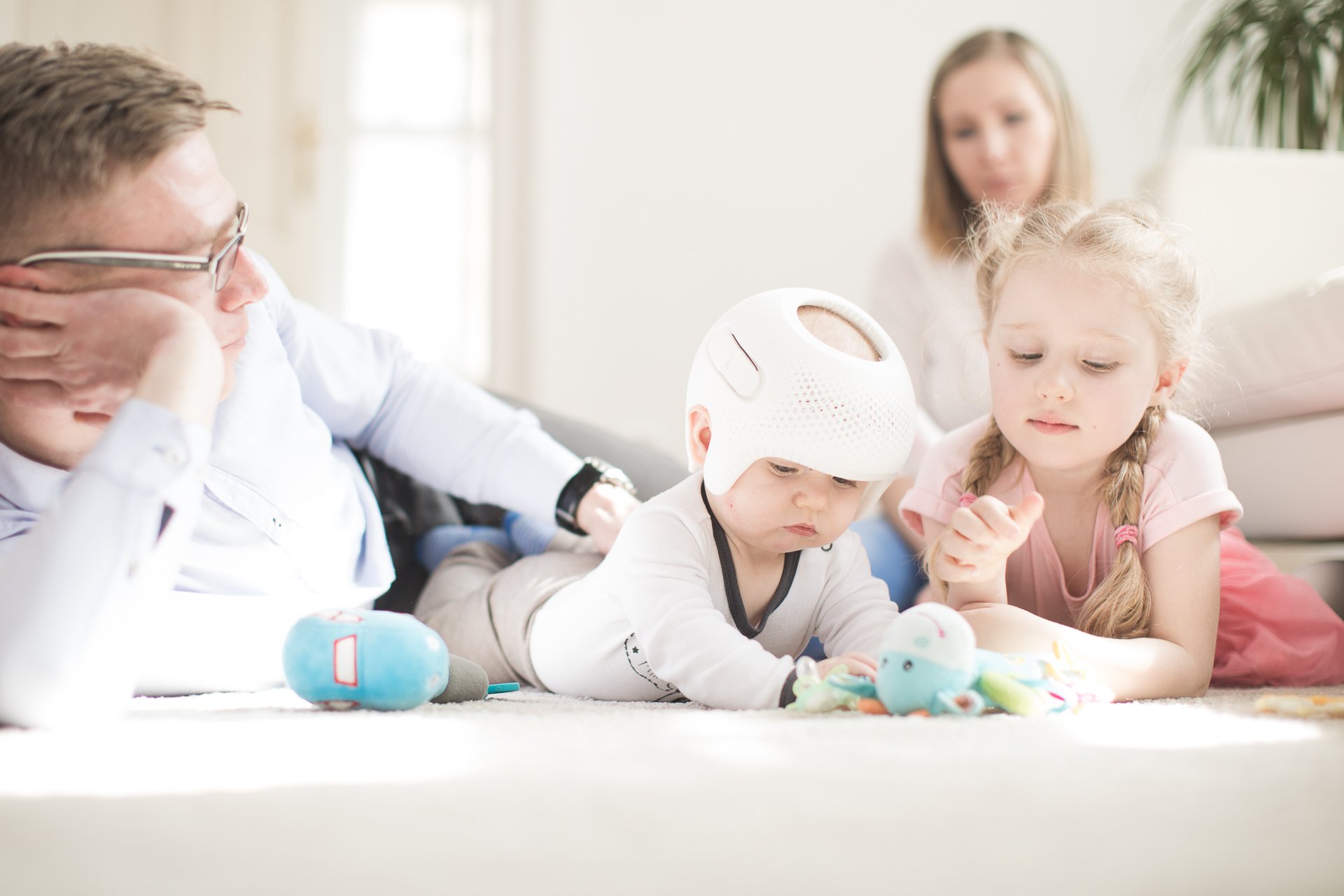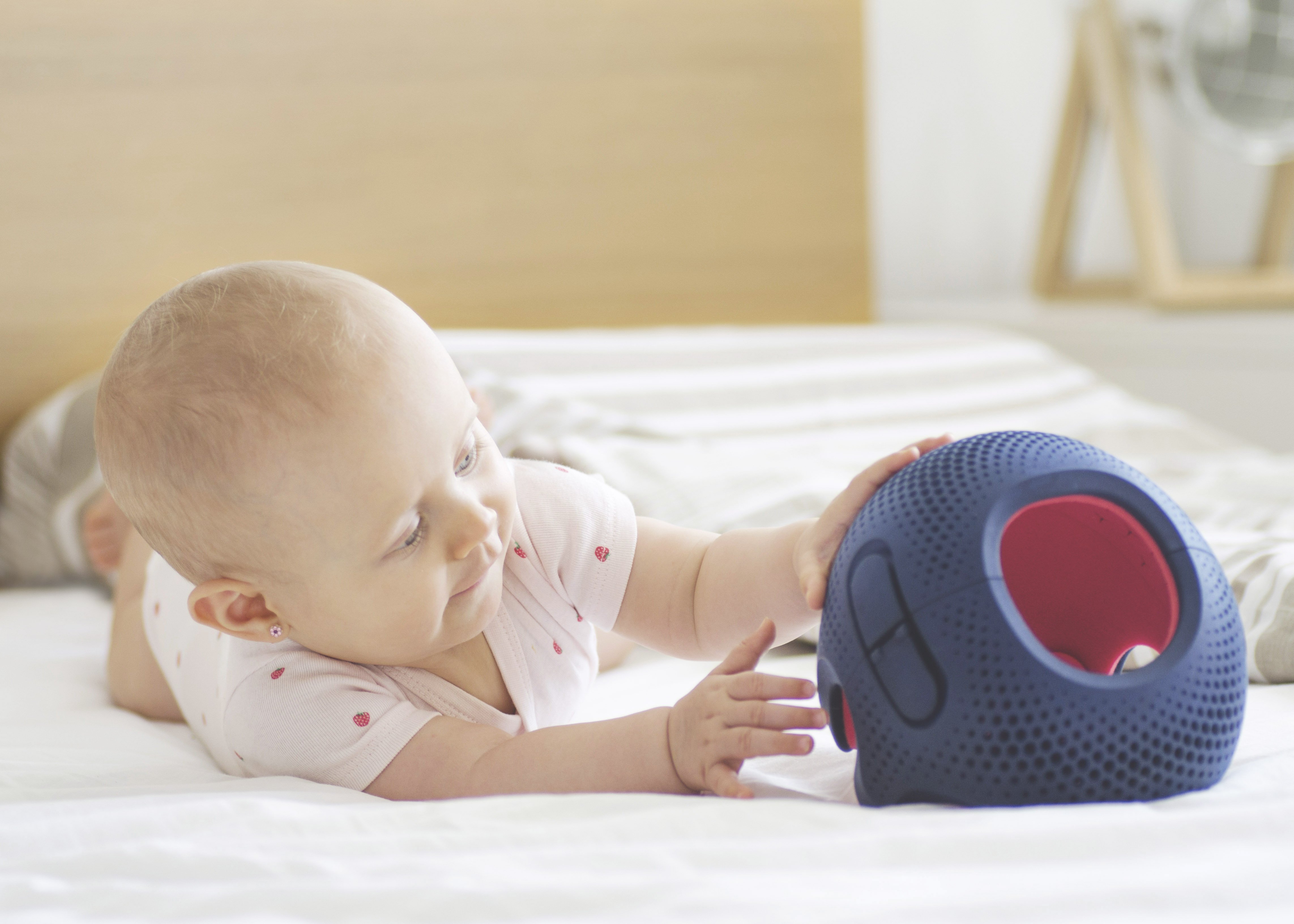
Torticollis (also known as wry neck) is a very common condition which can often develop into plagiocephaly. It is characterised by an inability to turn the head fully in both directions, and there may also be a head tilt towards the affected muscle.
As the muscles tighten and become cramped, pain and discomfort will often be felt, causing your baby to become irritable. In infancy, torticollis can develop in a number of ways. Firstly, newborns can experience torticollis due to maintaining a specific position in the womb or after a difficult childbirth. Acquired torticollis happens shortly after birth, either as a result of some shortening from the position that the baby has been lying in or due to bruising during the birth. However your baby has acquired torticollis, seeking a professional diagnosis and pursuing active treatment is necessary.
This informative blog post explains what to do if your baby has torticollis, helping to prevent the face and skull from growing unevenly, and improving the range of motion of the head and neck of your baby.
Signs and Symptoms of Torticollis
Of the biggest symptoms of torticollis is the tendency for your baby’s head to tilt to one particular side so that the chin is pointing to the opposite shoulder. For example, the head shows a consistent tendency to tilt to the right but the chin points towards the left shoulder.
You may notice that your baby has difficulty turning their head fully, especially towards the opposite side in which they rely on, demonstrating a limited range of motion in the neck area.
Visually, one side of your baby’s face may be flatter due to sleeping on their side and their face may show a general asymmetry.
You may also feel a soft lump in the affected neck muscle. This is the result of a small knot of tangled fibres in one of the side neck muscles, called the sterno-cleido mastoid muscle (SCM). Although this is a symptom of torticollis, it is nothing to worry about and is not cancerous, the lump will disappear at around six months old.
If your baby always holds their head to one side or looks uncomfortable and cramped in the neck area and you think they might have torticollis, the first thing you need to do is seek professional advice from your GP. There are a number of other conditions that can cause this head position, so it’s important to rule these out first and foremost.
How to Treat Torticollis Using Repositioning
If you have sought medical advice and your baby has been diagnosed with torticollis, there are a number of steps you can take to effectively treat the condition. Physiotherapy can be significantly effective in treating torticollis as gentle stretching of the sternocleidomastoid muscle will help to restore a full range of motion in the neck. With early intervention and careful management, your baby should soon be able to hold the head straight and turn it equally in both directions.
Neck stretches can also be incorporated into everyday routines, in a similar way to the repositioning techniques that are recommended for babies with plagiocephaly. For example:
When your baby is feeding, hold them in such a way that they must rotate the chin in order to feed, this will encourage your baby to stretch their neck muscles consistently throughout their daily feeds.
If your baby tends to sleep on one specific side, rotate the crib through 180 degrees so that your baby is encouraged to face the other way.
Move toys from one side of your baby to the other so that they turn the head to face in the opposite direction during playtime.
If carried out regularly, stretches like these should resolve the issue within a few months. If not, arrange another appointment with your doctor. More advice on how physiotherapy can help torticollis can be found in our detailed blog post, covering more techniques from the experts to effectively treat torticollis.
If your baby has been diagnosed with plagiocephaly and torticollis and is below four or five months old, the kinds of repositioning techniques mentioned above should eventually resolve both issues. However, if they have failed to make a difference within the space of a month or the deformity is severe, further treatment might be required in order to return the head shape to within the ‘normal’ range.
Treatment for moderate to severe forms of the condition comes in the form of a plagiocephaly helmet, which gradually shapes the bones in the skull to correct the head shape as it grows. Plagiocephaly treatment is proven to be effective, safe and pain-free, we have over 10 years’ experience providing helmet treatment for plagiocephaly and can provide you with specialist plagiocephaly advice and support.
If you wish to enquire about a plagiocephaly helmet for your little one, or would like further information and advice on what to do if your baby has torticollis and/or plagiocephaly, explore our website or call us on 0330 100 1800. Get in touch and one of our experienced orthotists will be happy to assist you on taking the next steps forward.


